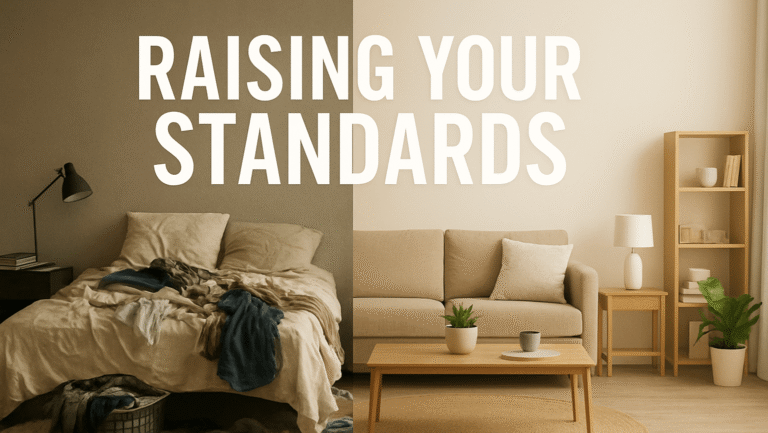Working from home has gone from being a rare perk to a daily reality for millions of professionals. But here’s the truth: while remote work offers flexibility, it also comes with a hidden challenge—how do you show up professionally when you’re not in an office?
When the lines between home and work blur, it’s easy to slip into “drifting mode”—answering emails from bed, letting video meetings slide with the camera off, or working in sweatpants for days on end. But if you want to thrive in your career, working from home requires more than just doing your tasks—it’s about building habits that make you look and feel like the professional you are.
Let’s break down a simple focus blueprint you can actually copy.
Why Professional Presence Still Matters (Even From Your Couch)
You might be thinking, “As long as I get my work done, why does it matter how I show up?” Here’s why:
- Perception = Progress. In remote jobs, visibility is everything. How you communicate, manage deadlines, and present yourself in virtual meetings all shape how others see you.
- Habits Spill Over. If you let small things slide—like rolling out of bed at 8:59 for a 9:00 meeting—it creates patterns that can hurt long-term performance.
- Professional pride fuels confidence. When you act like a professional, you feel like one. That confidence carries into how you solve problems, lead projects, and grow in your role.
The 4-Part Blueprint for Working From Home Like a Pro
Here’s a system to help you avoid drifting and stay focused while building credibility in your remote job.
1. Dress for the Role You Want (Yes, Even at Home)
You don’t need a suit and tie at your kitchen table—but ditching pajamas for “work casual” can transform your mindset. Personally, I used to roll into early Zoom calls wearing hoodies, and I noticed my energy was flat. When I switched to a clean polo or button-up, suddenly my posture, tone, and presence changed.
💡 Pro tip: Build a “remote work uniform dress code.” A few professional tops for meetings + comfortable bottoms still keep you in the zone.
2. Build a Structured Morning Routine
Without a commute, the temptation to sleep in is strong. But a commute wasn’t just wasted time—it was a transition ritual. Replace it with a short morning routine:
- Wake up at least an hour before work.
- Move your body (a 10-minute stretch or walk is enough).
- Review your top three priorities for the day.
By the time your shift starts, your brain is already in “work mode.”
3. Communicate Like You’re in the Office
When you’re remote, communication is your professional handshake. Be intentional:
- Reply promptly. Even if you don’t have the full answer, acknowledge messages so your team knows you’re engaged and you saw their message.
- Over-communicate deadlines. Let your boss know, “I’ll have this by Thursday at noon,” and deliver on it.
- Show up on camera. In meetings, being present with video on creates a connection and builds trust. Also demonstrates transparency that you are actually working.
- Respond accordingly, not reactively. Think about responses and don’t send a message for the sake of responding. Read twice, respond once.
4. Create a Workspace That Signals “I’m at Work”
Working from the couch seems cozy, but it does not show that you take work seriously. A dedicated workspace—even a small corner with a desk and a decent chair—signals professionalism. Remember, getting to work from home is a privilege that many would really like to have. If you can dedicate a room as your office, that would be ideal; if not, at least a section of a room that has minimal background noise or distraction. This space is dedicated to work, so no TVs or any distractions that will distract you from being productive.
Avoid the “Drift Traps”
Even with a solid blueprint, remote workers face common pitfalls. Watch out for these:
- The endless workday. Without boundaries, you’ll burn out. Close the laptop at 5, just like leaving an office.
- Household distractions. Laundry, dishes, or Netflix can pull you off course. Use breaks strategically, not as procrastination.
- Isolation. Without hallway chatter, remote jobs can feel lonely. Schedule virtual coffee chats or check-ins with coworkers.
Why This Matters for Your Career
Remote work isn’t going away—it’s becoming the norm. That means the professionals who treat working from home seriously will be the ones who rise. Employers notice who shows up polished, reliable, and engaged.
The beauty is, you don’t need special skills—just discipline and consistency. Show up like the professional you are, and your career growth will follow. Share this with someone who is working remotely or is going to work remotely.
Final Thoughts
Working from home doesn’t mean working less—it means working smarter. When you build professional habits into your day, you stand out in a sea of remote employees who are drifting.
Your blueprint is simple:
- Dress like it matters because it does.
- Start your mornings with intention.
- Communicate clearly and often.
- Create a workspace that supports your focus.
Do this consistently, and not only will you thrive in your current role—but you’ll also be ready for the bigger opportunities that come your way.
References:
- Harvard Business Review. A Guide to Managing Your (Newly) Remote Workers. https://hbr.org/2020/03/a-guide-to-managing-your-newly-remote-workers
- Buffer. The State of Remote Work 2023. https://buffer.com/state-of-remote-work





